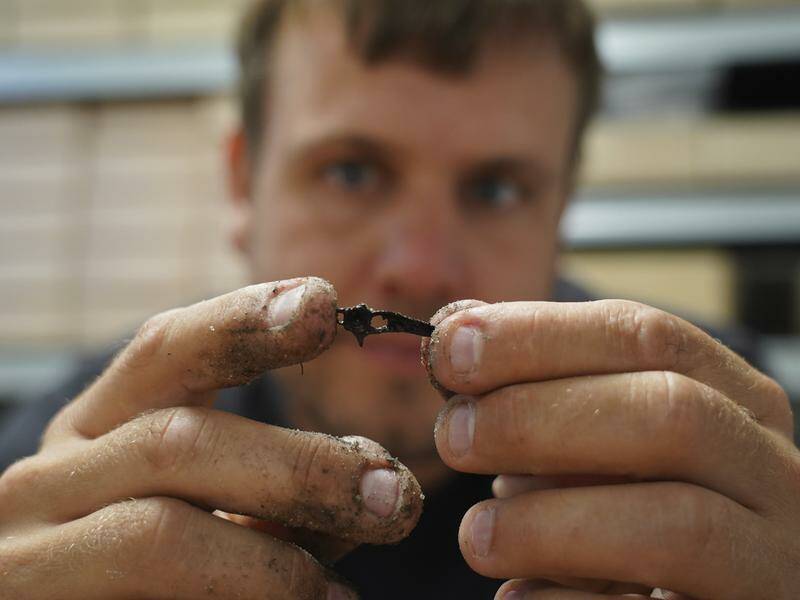
Beneath the dark waters of the Bay of Aarhus in northern Denmark, archaeologists are uncovering remnants of ancient coastal settlements submerged more than 8,500 years ago. This significant discovery is part of a broader initiative aimed at mapping underwater archaeological sites affected by rising sea levels.
The project, funded by the European Union at a cost of approximately €13.2 million (around $24 million AUD), involves researchers from Aarhus, the UK’s University of Bradford, and the Lower Saxony Institute for Historical Coastal Research in Germany. The objective is to explore sunken landscapes in Northern Europe and locate lost Mesolithic settlements as offshore developments expand.
Unearthing Coastal Life
Underwater archaeologist Peter Moe Astrup, who leads the excavations, noted that most of the evidence for these settlements has been found inland from the ancient coastline. “Here, we actually have an old coastline,” he remarked. “We have a settlement that was positioned directly at the coastline. What we actually try to find out here is how life was at a coastal settlement.”
After the last ice age, rising global sea levels submerged these Stone Age communities, forcing hunter-gatherer populations to move inland. According to Moe Astrup, sea levels rose by approximately 2 meters per century around 8,500 years ago. The excavation site, located roughly 8 meters below the surface, has revealed a trove of artifacts including animal bones, stone tools, arrowheads, a seal tooth, and a fragment of worked wood likely used as a basic tool.
Researchers are meticulously combing the site with underwater vacuums to collect materials for further analysis. They hope future dives will yield additional artifacts such as harpoons and fish hooks, providing deeper insights into the fishing practices of these ancient communities.
Preservation and Insights from the Past
Moe Astrup described the site as a “time capsule,” where the rise in sea levels preserved materials in an oxygen-free environment. “When sea level rose, everything was preserved,” he explained. Remarkably well-preserved wood and hazelnuts have been found, showcasing the exceptional conditions that have allowed these artifacts to endure.
The calm and shallow waters of the Bay of Aarhus will serve as a base for further explorations, including dives off the coast of Germany and future work in the more challenging conditions of the North Sea. These investigations aim to reconstruct the landscape that once existed, including a vast area known as Doggerland, which connected Britain to continental Europe and is now submerged beneath the southern North Sea.
To gain a better understanding of how rapidly sea levels rose, Danish researchers are employing dendrochronology, the study of tree rings. This technique allows them to date submerged tree stumps preserved in sediment, offering crucial insights into when coastal forests were drowned. Jonas Ogdal Jensen, a dendrochronologist at the Moesgaard Museum, explained, “We can say very precisely when these trees died at the coastlines. That tells us something about how the sea level changed through time.”
As contemporary society grapples with rising sea levels driven by climate change, this research aims to illuminate how Stone Age populations adapted to shifting coastlines more than eight millennia ago. “It’s hard to answer exactly what it meant to people,” Moe Astrup noted, “but it clearly had a huge impact in the long run because it completely changed the landscape.”
In the decade leading up to 2023, global sea levels rose by an average of approximately 4.3 centimeters, underscoring the ongoing relevance of this research. The findings from the Bay of Aarhus promise to enhance our understanding of ancient human resilience in the face of environmental change.







